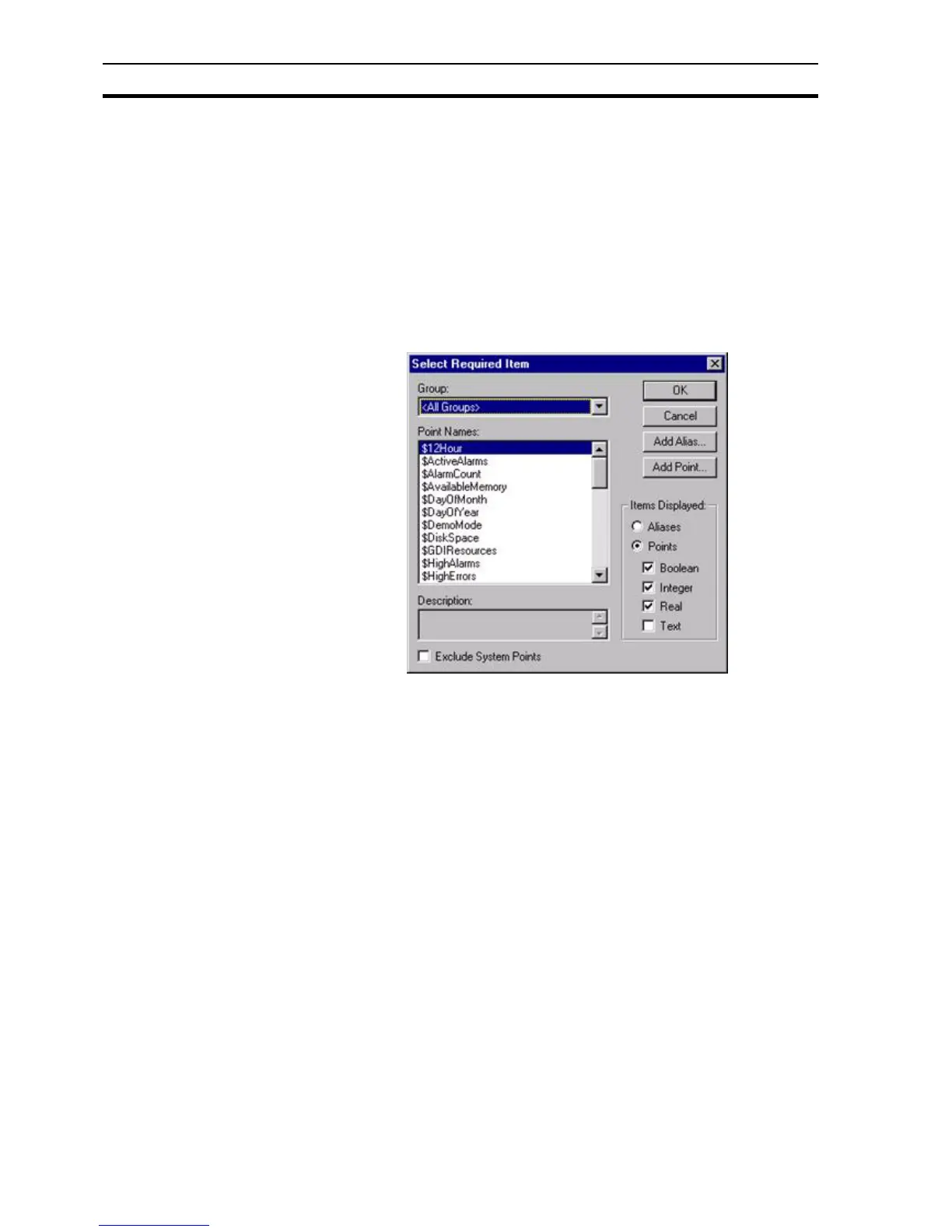Creating a New Alarm SECTION 8 Alarms
120
An expression based on a point is entered in the Expression: field. The alarm
is raised if the value exposed by the expression increases or decreases at the
speed based on the values of the ROC: field, the T/Base: field, and the
direction based on the Direction: field. The alarm is cleared when the rate-of-
change is less than the critical rate.
For the above example an alarm is raised when the boiler's temperature
increases by 5% or more per minute, and clears when the boiler's temperature
increases by less than 5% per minute.
A point may be inserted into any of the alarm types' Expression: field by either
typing in the point name or by selecting the Browse button, which results in the
Select Required Item dialog box being displayed, at the position where a point
should be inserted.
Only viable points can be viewed from a Select Required Item dialog box. The
list of items in the Point Names: field can be refined by selecting an option
from the Group: field. Click the OK button to accept the new point or click the
Cancel button to leave the point unchanged. Clicking the Add Point button or
Add Alias button allows a new point or alias to be created prior to association
with the expression. Points are discussed in chapter 3, Points, while
expression syntax is discussed in the CX-Supervisor Script Language
Reference Manual.
8-4-2-2 Alarm Messages
A message pertaining to a raised alarm is entered in the Raised: field. The
content of the field should be descriptive to provide the user with a reasonable
basis for an alarm solution.
The Alarm Editor provides a default raised message. The name of the alarm is
substituted for the # character in the message text when the OK button is
clicked. The raised message may be changed at any time simply by entering
the desired message in the text field.
A message associated with the alarm can also be entered in the Normal: field
in the same manner to that above; this message opens once an alarm
condition has been rectified and normal conditions have been resumed.
The Alarm Editor provides a default normal message. The name of the alarm
is substituted for the # character in the message text when the OK button is
clicked. The normal message may be changed at any time simply by entering
the desired message in the text field.
